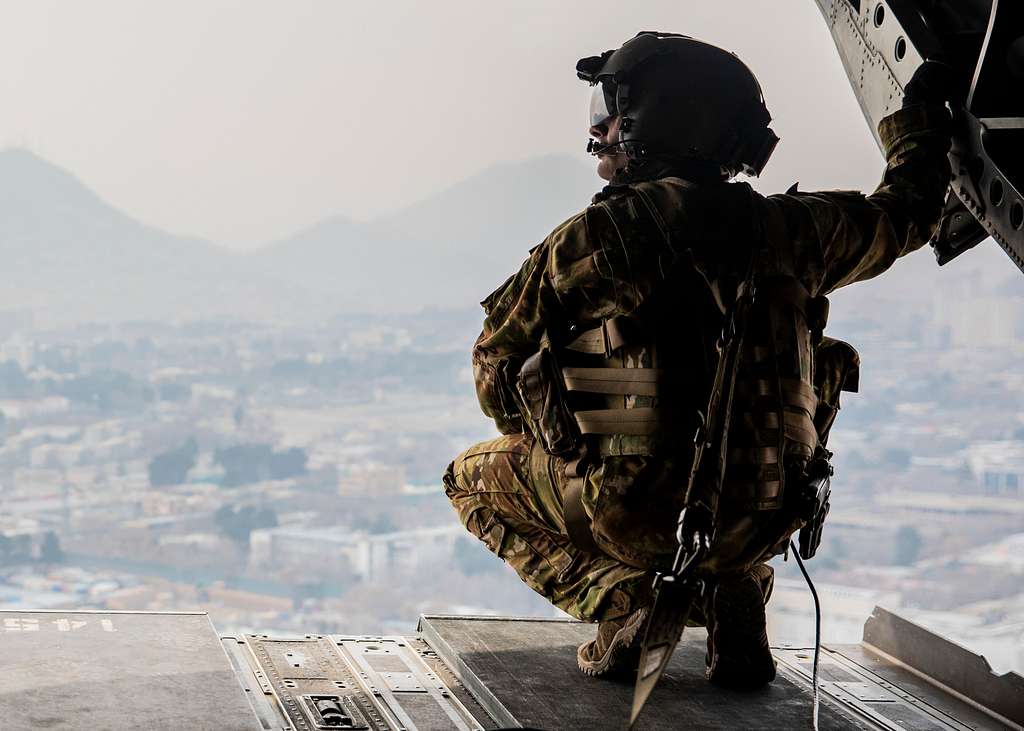(PONARS Eurasia Policy Memo) The collapse of the Afghan government and takeover by the Taliban is not a net win for China and Russia, nor will these developments automatically cement their partnership. Today, Chinese and Russian officials see the swift collapse of the Afghan government as confirmation of the bankruptcy of Western efforts at democracy-building. But, in the near future, Russia and China will face an unpredictable political and security environment close to their borders, as well as new challenges to their strategic partnership. After the Taliban took power, Russian Foreign Minister Sergei Lavrov and Chinese Foreign Minister Wang Yi spoke by telephone about coordinating their Afghanistan policy. Despite some optimistic reporting about developments in Afghanistan prodding the two countries to “synchronize their clocks” and bind their ties more tightly, it is far from clear that they are coordinating their strategies. Although some of their concerns overlap—counterterrorism, for example—the two countries approach Afghanistan from different strategic vantage points and have divergent interests in the endgame that they wish for the broader region.
Perilous Environments
For years, China and Russia complained about the presence of NATO forces in Afghanistan while benefiting at the same time from the security these forces provided. Even so, China has been unable to move forward with most of its economic agenda in Afghanistan, in part because of security issues. Chinese investments in the Mes Aynak copper mine and in oil and gas in Afghanistan’s northern provinces of Faryab and Sar-e-Pul have been stalled for more than a decade. Although a few modest construction projects have moved forward, some in collaboration with international organizations, the prospect of China swooping in to develop $1 trillion in potential rare earth elements in the country seems remote at this juncture. Although investing in connectivity in Afghanistan would fill a gap in the Belt and Road Initiative, this has not been an investment priority for Beijing. In 2020, China invested only $4.4 million in Afghanistan—3 percent of the amount it invested in Pakistan in the same year.
While the largest investor on paper, as well as an important trading partner for Afghanistan, China has given relatively little aid to the country compared to the United States, which has provided $143 billion since 2001. Afghanistan has depended on aid from the United States and other key partners, like India, for 75 percent of its budget, according to a World Bank study. Today most of Afghanistan’s funds are physically located outside the country, mostly in the United States, and are unlikely to be released unconditionally, leaving the Taliban-controlled state in an untenable economic position.
Despite concern that China is now positioned to exploit untold riches in the country and absorb it into the Belt and Road Initiative, it remains unclear how China is to develop Afghanistan’s resources now, given the worsening economic and security environment. Although Chinese media emphasize the potential for investment in reconstruction, Chinese officials focus on managing threats.
In neighboring Pakistan, the fate of the China Pakistan Economic Corridor already depends on a precarious security environment. Attacks by Baloch separatists on Chinese personnel in the country have been increasing, despite agreement by Pakistan to ensure the security of Chinese projects. On August 20, a suicide bombing by this group killed two Chinese nationals and wounded three others in the port of Gwadar, the site of a major Chinese investment. Some experts contend that the Taliban may be able to rein in attacks by these insurgents, who also operate across the border in Afghanistan, but if a long-term ally is unable to guarantee the security of Chinese companies, the security environment seems unlikely to be improved in a Taliban-ruled Afghanistan, which may not be able to control other bad actors.
Prior to the collapse of the Afghan government, Wang received assurances from Taliban co-founder Abdul Ghani Baradar that Afghan territory would not be used as a base for terrorist attacks against China. This assumes that Taliban promises can be kept—already a leap of faith—and that the Taliban can control the actions of all groups on its territory. After the Taliban took power, China’s deputy permanent representative to the United Nations told the Security Council that it was China’s “bottom line” that Afghanistan would not become “heaven for terrorists,” like Al-Qaeda, ISIS, or the East Turkestan Independence Movement (ETIM). China blames ETIM for a deteriorating security environment in Xinjiang requiring the mass incarceration of Uyghurs and Central Asian Muslims in the province, while Western experts on Xinjiang view China’s position on ETIM as a pretext for widespread and systematic cultural and religious repression. In November 2020, in one of his final acts in office, U.S. Secretary of State Mike Pompeo removed the group from the U.S. list of terrorist organizations.
Extensive Hurdles
Like China, Russia faces threats from instability in Afghanistan that could potentially spill over into Central Asia or to Muslim regions within the Russian Federation. Neither country has agreed to take in Afghan refugees. Some of Afghanistan’s Central Asian neighbors already have been doing so, although the parameters remain unclear. President Vladimir Putin has stated that Russia did not want Afghan fighters to make their way into the country disguised as refugees. According to TASS, Putin put it this way: “Who is among these refugees, how do we know? There may be thousands of them, or even hundreds of thousands, and maybe even millions… One can get a car, or even ride a donkey, and can go across the steppe. What are we going to do about it?”
Andrey Kazantsev, Chief Researcher of the Analytical Center of Institute for International Studies at MGIMO, affiliated with Russia’s Foreign Ministry, also sees a potential threat from Afghanistan-based Central Asian militants returning to their home countries, as well as from conflicts among criminal groups involved in lucrative narcotics trafficking over cross-border supply routes.
Even prior to the Afghan government’s collapse, Russia had been beefing up security cooperation with Tajikistan and Uzbekistan. As the Taliban expanded its reach in early August, Russia held joint drills with Uzbekistan and Tajikistan, following on earlier exercises with Kazakhstan and Kyrgyzstan, as well as taking steps to upgrade Russian bases in Tajikistan and Kyrgyzstan. Sergei Shoigu, Russia’s Minister of Defense, reaffirmed Russia’s defense commitment to Tajikistan under the Collective Security Treaty Organization (CSTO), a grouping of six former Soviet states that Russia sees as potentially playing a key role in addressing emerging security threats from Afghanistan. However, the CSTO has thus far proven unable to address unrest in the former Soviet space, and Turkmenistan, which has a 435-mile (700 km) border with Afghanistan, remains outside the organization.
While President Xi Jinping is unlikely to put boots on the ground in Afghanistan, China has a limited contingent of border forces in Tajikistan and some private security personnel in some Central Asian states, as a September 2019 National Bureau of Asian Research report details. In fact, China and Tajikistan conducted a tactical exercise three days after the collapse of the Afghan government. Given the informal division of labor between China and Russia—China providing economic goods, with Russia supplying security—Russia may not welcome any significant increase in Chinese forces any more than a U.S. military presence in Central Asia.
China faces soft power hurdles in Central Asia—its more overt engagement with the Taliban, on top of the incarceration of ethnic Kazakhs, Kyrgyz, Tajiks, and Uzbeks living in Xinjiang, will not warm any hearts in the region. Partnering with a group that most countries, including Russia, consider to be a terrorist organization also highlights the contradictions in China’s counterterrorism rationale for draconian security methods in Xinjiang. Moreover, China’s approach to Afghanistan now appears to be premised on the Taliban’s ability to control and govern the country, although previously Chinese officials had sought to encourage a power-sharing arrangement.
Russia, despite its dwindling economic resources, has maintained its soft power edge in Central Asia and pursued a more multifaceted strategy toward Afghanistan. Russia previously supported the Northern Alliance, which is now reconstituted as the National Resistance Front, under Ahmad Massoud, the son of its deceased former leader. Some pockets of resistance to the Taliban by this group remain in the Panjshir Valley, 93 miles (150 km) north of Kabul. The Taliban reportedly asked Russia to mediate a drawdown with Massoud’s forces and other prominent opponents, including the vice president of Afghanistan, Amrullah Saleh, who claims to be the legitimate leader of the country. Saleh is based in Tajikistan, and Massoud traveled there in mid-September for talks with Taliban officials, but they never showed up.
While the Russian Supreme Court officially designated the Taliban a terrorist group in 2003, Russian officials have been holding talks with it since 2018, and certainly, a power-sharing arrangement would be more beneficial to Russian interests. Russia also is staking out an independent South Asia policy, involving its own efforts to engage with Pakistan. While for China, the eclipse of India under a Taliban-controlled Afghanistan was a positive development, given the Sino-Indian border standoff and India’s involvement in the Quad, for Russia, the continued involvement of its longstanding partner, India, in Afghanistan would be preferable.
Conclusion
Some observers have suggested that Chinese and Russian objectives are in alignment, and Russia would even allow China to take the lead in the new security environment. However, early indications show that Russia and China each face their own complex geopolitical calculations that have points in common but are far from identical. Their interactions in the unfolding situation in Afghanistan continue to tell the international community a great deal about the degree of coordination in their strategic partnership. Although China and Russia may be in agreement about the broad brushstrokes of international relations and authoritarian governance, it remains to be seen whether or not they will speak with one voice on Afghanistan and if Russia will welcome a more active Chinese role in regional security in Eurasia. Russia appears to be retaking the initiative in regional efforts to address security concerns in Afghanistan, but China has its own agenda for the region, thus far largely connected to the security of Xinjiang and the promotion of the Belt and Road Initiative, but increasingly involving a greater Chinese role in regional security.
Elizabeth Wishnick is Professor of Political Science at Montclair State University.
Image credit











